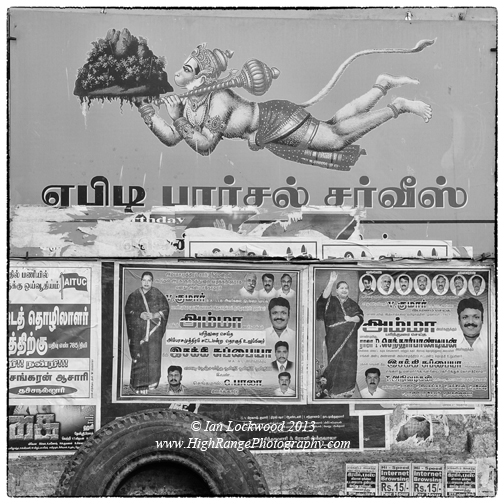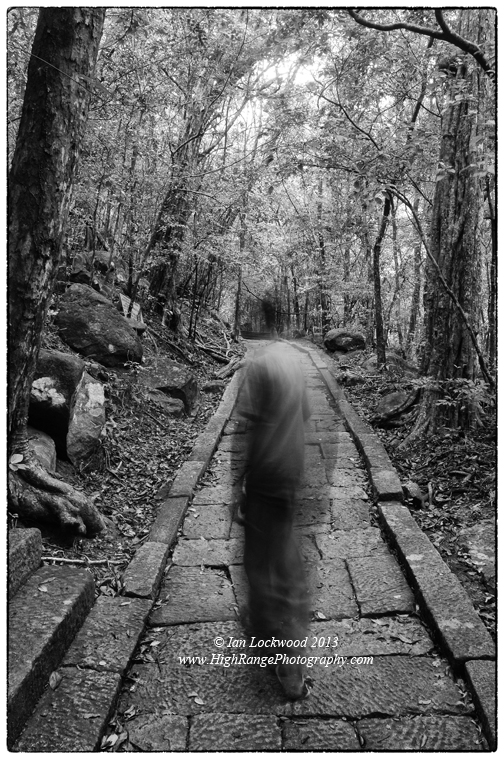In Hanuman’s Flight Path
Amongst the many stories and tradition of South Asia, no myth pervades the imagination in quite the way that the Ramayana does. This epic tale of heroes, villains, deceit and loyalty is set amongst an ancient India that encompasses much of the subcontinent’s diverse physical geography. The epic is more than a series of stories and subplots with complex characters and is also regarded as scripture by many devout Hindus. Its popularity spread where ancient Indians traded and today the Ramayana is still an important cultural element in South East Asia as well as locations that Indians migrated to during the colonial and modern period.
Here in Sri Lanka, the island is remembered as “Lanka” the home of the demon king Ravana and a setting for numerous events in the Ramayana chronicle. I was first exposed to the Ramayana to it in my early high school years when we read the entire book as part of Sally Noorullah’s brilliant South Asian Studies (SAS) class at AIS/Dhaka. At the that time, it was the hero’s tale that gripped my imagination. In more recent years I have become intrigued with the fascinating links between the Ramayana story and the linked biogeography of Sri Lanka, the Western Ghats and the Himalaya.
In the epic tradition, towards the end of the story Laxamana, the brother of Rama, is gravely injured in a battle with Ravana. Rama asks Hanuman to fly to the Himalaya’s to gather and retrieve sanjavani, a life-giving medicinal herb that will cure Laxamana. Blessed with special flight powers, Hanuman leaps across peninsular India’s vast forested lowlands and river valleys to find the magic mountain in the mighty, snow-capped Himalaya. He successfully finds the mountain but is mystified by the abundance of different plants growing on it. So, in an ingenious master stoke that only a monkey god can perform, he carries the whole mountain southwards. Hanuman arrives in time and Laxamana is cured. The battle is won, a complex series of plots is drawn to a close, Sita is reunited with Rama and good triumphs over evil.
A lesser-known part of the story is that as Hanuman flew southwards bits and pieces of the mountain are believed to have fallen off. Today, there are dozens of sacred groves and forests hillock along the Western Ghats and in Sri Lanka that host sites where these chunks of “Hanuman’s mountain” were reported to have fallen to earth. They host vegetation and life forms with a unique Himalayan affiliation, which is where the myth and biogeography come together.
Sri Lanka hosts several scared groves with mythical links to Hanuman and his amazing flight to the Himalaya and back. The remote forest monastery of Ritigala, just north of Sigiriya, is one of the important sites. In fact it is believed that an exposed boulder that crowns Ritigala’s densely forested slopes is where Hanuman leapt away on the start of his flight to the Himalaya. Ritigala is composed of an assemblage of mountains that rise above the plains and host a small but significant patch of forest. Although it is located in the “dry zone” of Sri Lanka the mountain has its own microclimate and there are a variety of vegetation types on it. In the coming months I am preparing a learning experience for OSC students that will explore the dry zone forests and marine systems of the east coast. One of our days will be spent exploring Ritigala. In order to get a better sense of the area and make plans for our upcoming trip my family and I had a chance to visit Ritigala earlier this month. The pictures in the post were mostly taken on this trip.

Hanuman carrying the mountain of medicinal herbs from the Himalayas to the shores of Lanka to help cure the gravely injured brother of Rama, Laxaman. This is a popular scene painted on transport vehicles and walls across India. This image was taken on the Tamil Nadu plains near Tirunelveli in 2010.

Ritigala seen from the south east approach. The upper areas are a “strict nature reserve” and are out of bounds for visitors.

More Ritigala images: a mix of crumbling granite steps taken over by the forest, the “library”-certainly our favorite place- and a sign warning visitors of elephants in the area (both wild and from a nearby elephant orphanage).
Further Information on Ritigala & the Ramayana
See Sebastian Posingis’ 2011 blog post for sublime images depicting Ritigala.
National Geographic Traveller (India) featured Ritigala on the cover (taken by Nirvair Singh Rai as part of a photographic competition aired on Nat. Geo TV) June 2013
Thelka has just published a book excerpt and article by Devdutt Pattanaik on his writing of the Ramayana.
“The unique mountain ranges in Sri Lanka.” Sunday Times. 8 January 2012. Web. 28 October 2013.
Wijesekera, Lawanya. “Ritigala, evergreen misty mountain once an austere Buddhist monastery.” Sunday Times. 13 November 2011. Web. 28 October 2013.


Very interesting blog, Ian. Have botanists done studies of Ritigala and compared the plants to the Tamil Nadu “Hanuman” mountains? Is it just an altitude effect or are these truly Himalayan type plants?
Bruce DeJong
2013-10-28 at 9:27 pm
Thanks for the note Bruce. I need to list some of the specific species that are in South Indian sacred groves and have Himalayan affinity. In places like the Palanis there are bird species like the laughing thrushes (Garralux sp), trees such as the Rhododendrons and Trees ferns (Cyathea nilgirensis etc.). Lower down there may be others. Ritigala has a small pocket of “wet zone” montane forest near its summit but we were not able to get up there on this visit. I need you, Bob & Tanya to come over to help explore these places and their plants!
ianlockwood
2013-10-29 at 3:23 pm
jai shri hanuman, ian! lovely article and fabulous photos. sounds like you, bruce, bob and tanya have your next ed-venture en queue…
bryanplymale
2013-11-04 at 12:10 pm
Enjoyed this a lot. Thank you, Ian.
Dolly George
2013-12-02 at 9:14 am
[…] “In Hanuman’s Flight Path.” Ian Lockwood Blog. October 2013. Web. […]
Glimpses of Polonnaruwa | Ian Lockwood
2023-04-24 at 8:23 pm